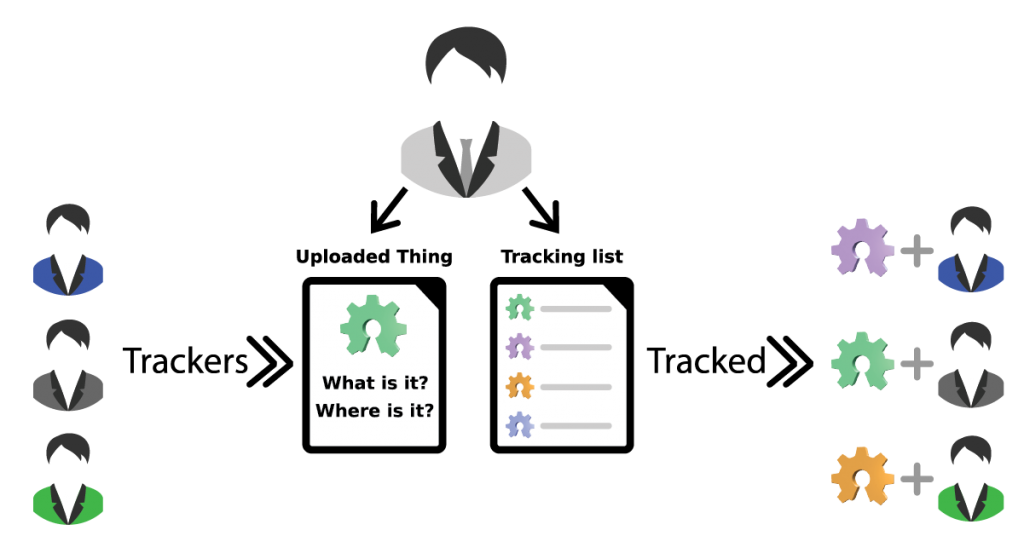Thing Tracker Network
Please note thingtracker is no longer maintained and I do not own of control the thingtracker.net domainname. A copy of the webpage is available via github
A little time ago, RichRap started a discussion on the RepRap forum about a model repository for the project. My response to this crystallised a few thoughts I had on the subject since the Thingiverse debacle from last year. The basic concern being that, whilst creating a content repository is relatively straightforward from a technical perspective, there are other factors which will determine whether it will succeed. The most obvious being the catch-22 situation whereby users are attracted to a service that is being used by many other people, i.e. where they are more likely to have their project/design discovered by other people. There is also a concern that any one provider evolves into a monopoly, depriving the community of diversity.
With all this in mind, I have been developing the idea a little more and would like to present the resulting proposal for consideration to the community. To do this I have created an information website which I hope can be used as a central hub for distribution and further development of the idea: thingtracker.net
The site should have enough information to get the rough idea across, and so I shan't repeat it all in this blog post, however a TL;DR summary may be helpful. The proposal simply suggests a way in which an ad-hoc Network of Things could be created. This is enabled by a short, flexible, and easy to implement specification, which, when followed, would allow a wide range of individuals and groups to participate in the network. Furthermore, the open nature of the specification should promote development of an ecosystem within the maker community, allowing a diverse set of applications and websites to emerge.
Use Cases
A couple of use-cases may help explain the potential of the proposal.
- As an individual, when I create a design that I wish to share, I have several services available to me (Thingiverse, GrabCad, etc.). These being walled gardens means that anyone searching within one will not find results from another. Furthermore, search engines such as Google may result in my Thing being found, but its generic nature means that this is unlikely unless people use the right search terms. Therefore my options are either to limit the number of people who can discover my Thing, or submit, and maintain, the Thing to multiple repositories. Neither option is optimal, and the latter is particularly inefficient should my Thing evolve and I have to update the information in several places. Ideally I would submit my Thing to my favourite (based on features that I value) repository, and then have it discoverable by others, independent of where it is hosted. Having the option to self-host the Thing would also be good. What is missing at the moment is a standardised way for web applications to exchange data about Things.
- As a member of a hackerspace, or other group, we would like to host and share our designs ourselves but still have them discoverable by a wide audience. Furthermore, we would like to provide much more detailed information, such as: bill of materials; instructions; and other information. In this case there may be a sub-Network of Things which has it's own ecosystem but is still a part of the wider network.
Where Next?
To start dissemination of the proposal I made a brief post on Google+ and was pleasantly surprised at the positive feedback the idea received. I shall be collating this information and reflecting it in further revisions of the proposal and specification. In order to facilitate further discussions, without over-thinking the infrastructure, I have created a dedicated page on G+ to act as a blog and to collect discussions, etc.
The proposal is at a very early stage and is completely open to everyone, so feel free to share your ideas, thoughts and opinions. If you feel that an open, distributed, Network of Things would benefit the maker community then please share the links, spread the word and join the discussion.
